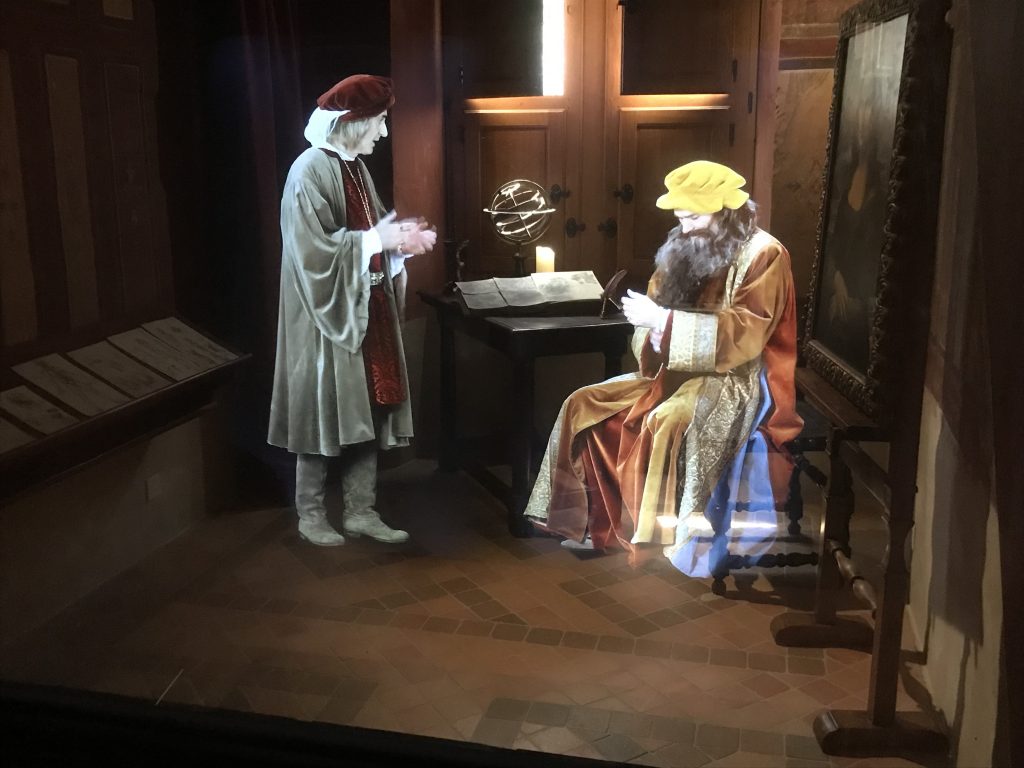
Leonardo da Vinci is very much with us. The recent sale, at auction, of his Salvator Mundi, for $450 million, puts him in a rarefied field–some would say, out of this world. There is no other artist in history whose work has claimed anywhere close to that price.
The new biography by Walter Isaacson is doing much more to cement the myth of Leonardo as the ultimate Renaissance genius. But Isaacson claims his genius is something accessible to everyone: the ability to connect science and art (and math, literature, engineering and humanities), to approach our world with curiosity, and to see deeper into the mysteries that surround us.
My teen time travel novel, Edge of Yesterday, as well as the learning platform that grows out of the story, and seeks to spark curiosity and creativity–connecting those dots to inspire young people to see deeper, expands on the lessons of da Vinci’s life, and connects it to the capacity to learn.
A pioneer in many fields, Leonardo da Vinci is a great lens through which to view a popular debate — is STEM (science, technology, engineering and mathematics) or STEAM (those emphases with the inclusion of arts and design) the more important emphasis in school?
It is da Vinci’s status not only as a brilliant painter but also as a polymath, an impressario, a musician and the grandfather of paleontology along with a dozen other accomplishments.
Wellesley College did a study and found a double-digit percentage decline in humanities enrollment and 8 percent decline in social sciences next to a nearly 30 percent jump in math and sciences. But they also found that interdisciplinary courses enrollments went up 18 percent.
When asked what many students regret, Ann Velenchik, the dean of academic affairs there said: “I wouldn’t say it was students’ biggest regret, but when they looked at their academic programs, they wished they haddone more arts and humanities.”
In fact, Scientific American reported that interdisciplinary scientists are far more likely to become Nobel Laureates than their more focused counterparts. In fact, Laureate scientists are “seventeen times likelier than the average scientist to be a painter, twelve times as likely to be a poet, and four times as likely to be a musician.”
Today’s STEM leaders feel the same. Ben Shneiderman, University of Maryland, College Park professor and leading researcher in human-computer interaction said: “Leonardo da Vinci combined art and science and aesthetics and engineering, that kind of unity is needed once again.”
If you agree, find out more about supporting STEAM education either through supporting a local STEAM nonprofit like Uplift D.C. or through exposing kids to diverse stories of people in STE(A)M fields, whether a small book like mine, Edge of Yesterday with an interactive website, or a big motion picture like Hidden Figures.
Can Leonardo’s words open inspiration for each of us to tap into our own genius? He wrote, “I have been impressed with the urgency of doing. Knowing is not enough; we must apply. Being willing is not enough; we must do.”
So what are you doing?
